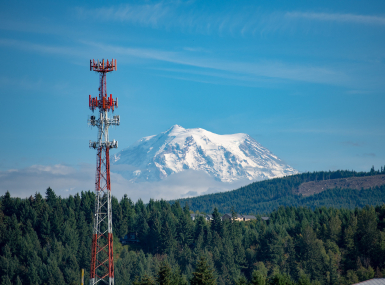Concerns mount over FCC 5G rollout plans

NACo is concerned about industry influence in FCC Broadband Deployment Advisory Committee, lack of updates
The National Association of Counties and other groups are urging the chairman of the Federal Communications Commission to work more closely with local governments as the agency looks into how best to deploy the next generation of telecommunications services.
Earlier this year, the FCC appointed at least 25 telecom execs to its 30-member Broadband Deployment Advisory Committee (BDAC), which is charged with making recommendations on how local governments should work with them on executing siting proposals in their communities.
Several government officials were also appointed to the committee, including San Jose, California Mayor Sam Liccardo, as well as a utility commissioner from Massachusetts, an IT director from the Coeur d’Alene Tribe and a representative from the Utah Governor’s Office of Economic Development.
With a deadline of Nov. 9 nearing for BDAC to make its proposals, according to BDAC members, NACo is raising concerns about not only the telecom-heavy makeup of the committee, but also the FCC’s failure to provide timely updates about its radiofrequency exposure limits and policies. The FCC set radiofrequency radiation limits 21 years ago. The Telecommunications Act of 1996 pre-empts local governments from looking into the effects of radio frequency emissions from an antenna.
A Department of Health and Human Services National Toxicology Program, funded at $20 million, has been conducting experiments in rats and mice on potential health hazards from cellphone radiofrequency radiation. A preliminary report concluded that “exposure to radio frequency radiation has the potential to induce measurable DNA damage under certain exposure conditions.” The complete report is expected to be released in early 2018.
“There is an urgent need to evaluate 5G health effects now before millions are exposed…we need to know if 5G increases the risk of skin diseases such as melanoma or other skin cancers,” said Ron Melnick, a retired NIH scientist who led the design of the study on cellphone radiofrequency radiation. Melnick made his comments at a science conference earlier this year.
NACo, in a letter to FCC Chairman Ajir Pai, is also asking the agency to address the perception that the BDAC is “interested in pursuing only industry goals” and also urges the agency to make all of its meetings public.
Protecting local authority over rights of way is a main concern. “We request that you…honor our constitutionally guaranteed protection of fair compensation on the use of public assets, and maintain our congressionally recognized right to govern the siting of cell towers and small cells in our communities,” the letter states.
With regard to radiofrequency exposure limits and policies, NACo is asking the FCC to review its current rules.
In 1996, “cellphone use by children was rare, smart phones did not exist, cellphone cases were virtually unheard of, and the FCC assumed consumers would use belt clips or holsters to carry their phones,” the City and County of San Francisco said in comments to the agency nearly four years ago, when it and others urged the FCC to review its rules.
Meanwhile the BDAC has held two public meetings, with smaller groups meeting behind closed doors. Its third and final public meeting, reportedly set for Nov. 9, is expected to feature the group’s recommendations on how to streamline the rollout of 5G. NACo and the other groups are urging the FCC to post information online about the meetings.
NACo is also urging BDAC to widen its focus by looking at how to increase broadband services to underserved rural and low-income areas.
Attachments
Related News

House committee passes local broadband permitting preemption bills
The American Broadband Deployment Act of 2025 would enact new restrictions on a variety of state and local land use and zoning authorities pertaining to the deployment of telecommunications infrastructure.


